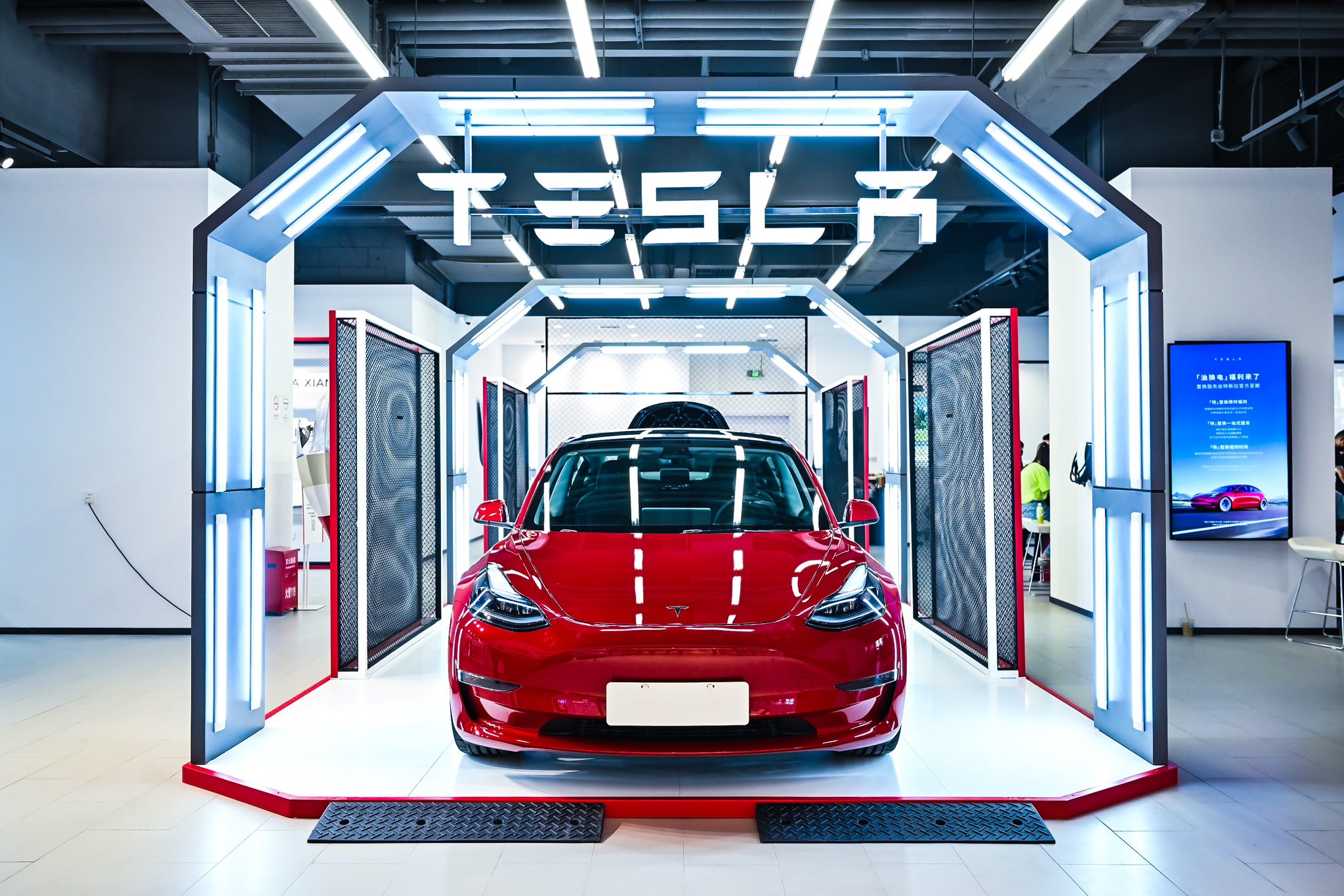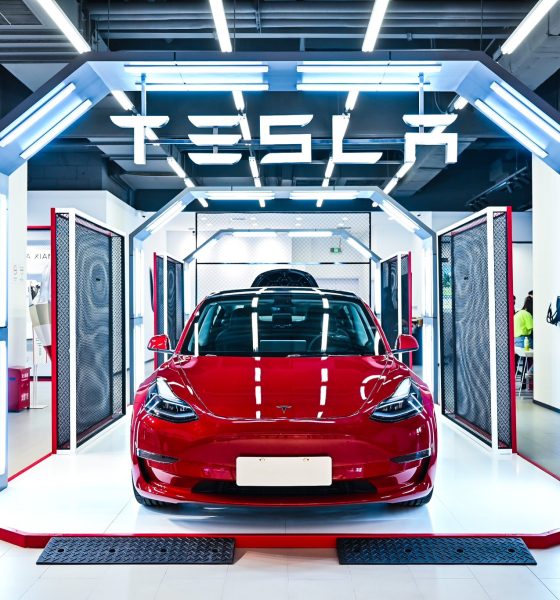

News
Elon Musk says Tesla’s competition can’t be seen with a telescope, but the company admits Chinese EV makers are ‘scary’
Tesla has been head and shoulders above competitors in the electric vehicle field for some time due to its maturity as a company and expertise in EV engineering. The fact that very few companies can say they have been developing electric vehicles for as long as Tesla has is where the company’s true advantage lies.
In fact, CEO Elon Musk believes that whoever is in second place, even though he “doesn’t really know who would even be a distant second,” is so far away, you can’t even see them “with a telescope:”
“We still don’t even know really who would even be a distant second. So yes, it really seems like we’re — I mean, right now, I don’t think you could see a second place with a telescope, at least we can’t. So that won’t last forever.”
In the past, Musk has stated Volkswagen was Tesla’s closest competition. But since former group CEO Herbert Diess left late last year, that may have changed.
Volkswagen sold ~99k EVs out of 1.9M in Q1, seeks to gain 10% market share in North America by 2030
Tesla is not only a leader in EV tech, but it also has been extremely resilient through the past few years. As the COVID-19 pandemic disrupted supply chain regularity in 2020, Tesla undoubtedly felt the pressure. Its order log lengthened in nearly every market, while supply continued to dwindle. Even to this day, Tesla executives are notorious for stating the company has a supply problem, and not a demand one.
While companies like Rivian, Polestar, and Lucid, and automotive mainstays like Ford and General Motors, have offered comparable EV options to consumers, some of which performed extremely well in 2022 with sales. But despite this, Musk still maintains that Tesla’s biggest competitors do not lie within the United States. Instead, a foe that was mentioned in previous earnings events was mentioned: the Chinese.
“The Chinese are scary, we always say that,” Lars Moravy, VP of Vehicle Engineering, said.
“I think we have a lot of respect for the car companies in China,” Musk added. “They are the most competitive in the world.”
Complementing their work ethic and drive, Musk also knows the Chinese automotive market is the most competitive, and the largest, on Earth. Tesla still led the Chinese market in 2022 in pure EV sales, but BYD was the country’s largest seller of plug-in vehicles, including plug-in hybrid EVs. However, most EV enthusiasts would consider PHEVs irrelevant.
What will it take for companies to catch up to Tesla? The answer likely depends on who you ask. Musk believes nobody is close in terms of solving real-world AI, but there are undoubtedly companies out there that have arguments about that. Mercedes-Benz launched the first Level 3 system in Germany last year, and while it is only operational on the Autobahn, it technically trumps Tesla’s Level 2 system, which is determined by the Society of Automotive Engineers’ guidelines for autonomy.
And, if you ask Consumer Reports, Tesla Autopilot is the seventh-best Advanced Driver Assistance System you can get currently.
Ford BlueCruise, GM SuperCruise ranked as best Driver Assistance systems, Tesla Autopilot ranks 7th
Others might state Waymo, Cruise, and others, who have operational driverless ride-sharing services set up are technically ahead of Tesla. However, these companies are confined to certain areas through geofencing, and they undoubtedly have problems themselves. No suite is close to perfect.
Where Tesla’s true advantage lies is within its infrastructure, as it is the only company to establish a worldwide network of Superchargers that may or may not enable other companies to utilize for their own charging needs soon. Currently, and especially in the United States, you must have a Tesla to utilize this. Fifteen countries in Europe are outliers, as they are a part of Tesla’s Supercharger Pilot Program.
It may take a few years for a clear-cut competitor to emerge that will push Tesla to the brink of relinquishing its crown of “EV leader.”
“So in five years, I don’t know, probably somebody has figured it out. I don’t think it’s any of the car companies that we’re aware of,” Musk said.
I’d love to hear from you! If you have any comments, concerns, or questions, please email me at joey@teslarati.com. You can also reach me on Twitter @KlenderJoey, or if you have news tips, you can email us at tips@teslarati.com.
Quotes provided by Motley Fool.

News
Tesla starts showing how FSD will change lives in Europe
Local officials tested the system on narrow country roads and were impressed by FSD’s smooth, human-like driving, with some calling the service a game-changer for everyday life in areas that are far from urban centers.

Tesla has launched Europe’s first public shuttle service using Full Self-Driving (Supervised) in the rural Eifelkreis Bitburg-Prüm region of Germany, demonstrating how the technology can restore independence and mobility for people who struggle with limited transport options.
Local officials tested the system on narrow country roads and were impressed by FSD’s smooth, human-like driving, with some calling the service a game-changer for everyday life in areas that are far from urban centers.
Officials see real impact on rural residents
Arzfeld Mayor Johannes Kuhl and District Administrator Andreas Kruppert personally tested the Tesla shuttle service. This allowed them to see just how well FSD navigated winding lanes and rural roads confidently. Kruppert said, “Autonomous driving sounds like science fiction to many, but we simply see here that it works totally well in rural regions too.” Kuhl, for his part, also noted that FSD “feels like a very experienced driver.”
The pilot complements the area’s “Citizen Bus” program, which provides on-demand rides for elderly residents who can no longer drive themselves. Tesla Europe shared a video of a demonstration of the service, highlighting how FSD gives people their freedom back, even in places where public transport is not as prevalent.
What the Ministry for Economic Affairs and Transport says
Rhineland-Palatinate’s Minister Daniela Schmitt supported the project, praising the collaboration that made this “first of its kind in Europe” possible. As per the ministry, the rural rollout for the service shows FSD’s potential beyond major cities, and it delivers tangible benefits like grocery runs, doctor visits, and social connections for isolated residents.
“Reliable and flexible mobility is especially vital in rural areas. With the launch of a shuttle service using self-driving vehicles (FSD supervised) by Tesla in the Eifelkreis Bitburg-Prüm, an innovative pilot project is now getting underway that complements local community bus services. It is the first project of its kind in Europe.
“The result is a real gain for rural mobility: greater accessibility, more flexibility and tangible benefits for everyday life. A strong signal for innovation, cooperation and future-oriented mobility beyond urban centers,” the ministry wrote in a LinkedIn post.
News
Tesla China quietly posts Robotaxi-related job listing
Tesla China is currently seeking a Low Voltage Electrical Engineer to work on circuit board design for the company’s autonomous vehicles.

Tesla has posted a new job listing in Shanghai explicitly tied to its Robotaxi program, fueling speculation that the company is preparing to launch its dedicated autonomous ride-hailing service in China.
As noted in the listing, Tesla China is currently seeking a Low Voltage Electrical Engineer to work on circuit board design for the company’s autonomous vehicles.
Robotaxi-specific role
The listing, which was shared on social media platform X by industry watcher @tslaming, suggested that Tesla China is looking to fill the role urgently. The job listing itself specifically mentions that the person hired for the role will be working on the Low Voltage Hardware team, which would design the circuit boards that would serve as the nervous system of the Robotaxi.
Key tasks for the role, as indicated in the job listing, include collaboration with PCB layout, firmware, mechanical, program management, and validation teams, among other responsibilities. The role is based in Shanghai.
China Robotaxi launch
China represents a massive potential market for robotaxis, with its dense urban centers and supportive policies in select cities. Tesla has limited permission to roll out FSD in the country, though despite this, its vehicles have been hailed as among the best in the market when it comes to autonomous features. So far, at least, it appears that China supports Tesla’s FSD and Robotaxi rollout.
This was hinted at in November, when Tesla brought the Cybercab to the 8th China International Import Expo (CIIE) in Shanghai, marking the first time that the autonomous two-seater was brought to the Asia-Pacific region. The vehicle, despite not having a release date in China, received a significant amount of interest among the event’s attendees.
Elon Musk
Elon Musk and Tesla AI Director share insights after empty driver seat Robotaxi rides
The executives’ unoccupied tests hint at the rapid progress of Tesla’s unsupervised Robotaxi efforts.

Tesla CEO Elon Musk and AI Director Ashok Elluswamy celebrated Christmas Eve by sharing personal experiences with Robotaxi vehicles that had no safety monitor or occupant in the driver’s seat. Musk described the system’s “perfect driving” around Austin, while Elluswamy posted video from the back seat, calling it “an amazing experience.”
The executives’ unoccupied tests hint at the rapid progress of Tesla’s unsupervised Robotaxi efforts.
Elon and Ashok’s firsthand Robotaxi insights
Prior to Musk and the Tesla AI Director’s posts, sightings of unmanned Teslas navigating public roads were widely shared on social media. One such vehicle was spotted in Austin, Texas, which Elon Musk acknowleged by stating that “Testing is underway with no occupants in the car.”
Based on his Christmas Eve post, Musk seemed to have tested an unmanned Tesla himself. “A Tesla with no safety monitor in the car and me sitting in the passenger seat took me all around Austin on Sunday with perfect driving,” Musk wrote in his post.
Elluswamy responded with a 2-minute video showing himself in the rear of an unmanned Tesla. The video featured the vehicle’s empty front seats, as well as its smooth handling through real-world traffic. He captioned his video with the words, “It’s an amazing experience!”
Towards Unsupervised operations
During an xAI Hackathon earlier this month, Elon Musk mentioned that Tesla owed be removing Safety Monitors from its Robotaxis in Austin in just three weeks. “Unsupervised is pretty much solved at this point. So there will be Tesla Robotaxis operating in Austin with no one in them. Not even anyone in the passenger seat in about three weeks,” he said. Musk echoed similar estimates at the 2025 Annual Shareholder Meeting and the Q3 2025 earnings call.
Considering the insights that were posted Musk and Elluswamy, it does appear that Tesla is working hard towards operating its Robotaxis with no safety monitors. This is quite impressive considering that the service was launched just earlier this year.








